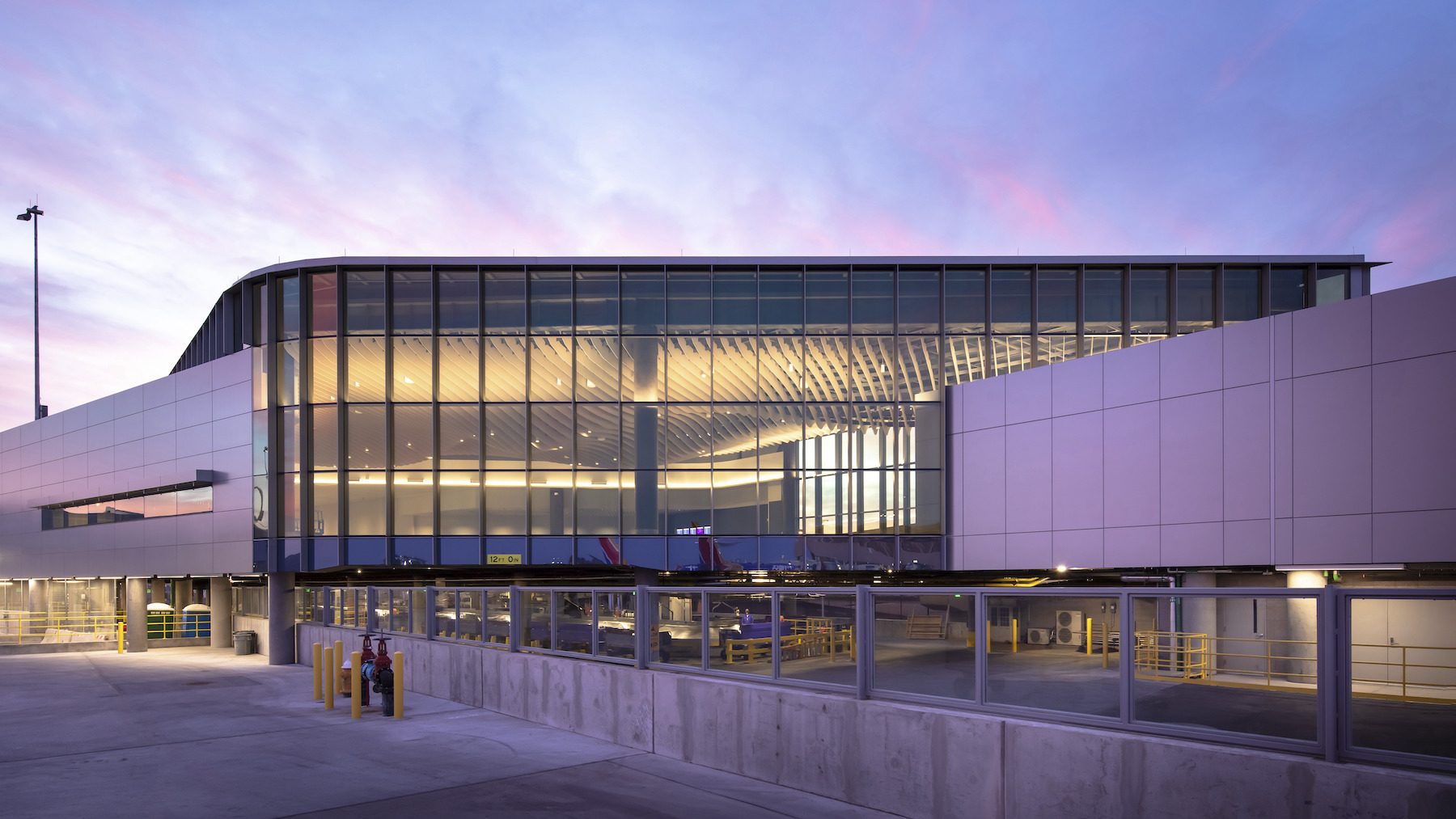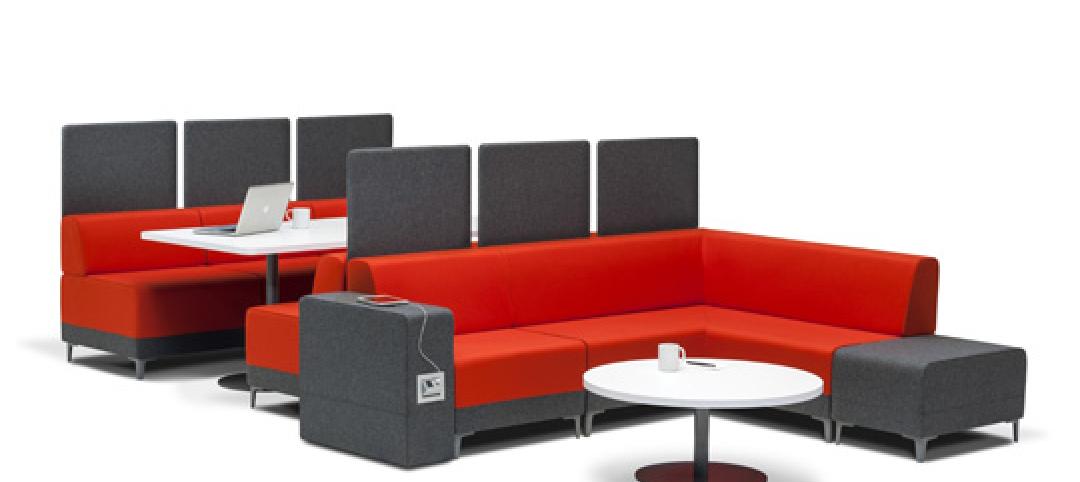McCarthy Building Companies recently completed construction of the final concourse in Terminal 4 at Phoenix Sky Harbor International Airport. The new concourse, designed by SmithGroup in partnership with Corgan, is located at the southwest corner of the terminal adjacent to the low D concourse.
For this specific terminal at Phoenix Sky Harbor International Airport, this project was seen as a much needed investment for not only passengers, but the airport itself. Terminal 4 is the busiest at the airport and handles more than 80% of traffic annually. During peak periods, the terminal often reaches full capacity, and now the addition of eight new gates brings the Terminal 4’s gate total to 92.
Improving Airport Passenger Experience
The project team focused on implementing features to improve passenger experience while they wait for their flight. The gates provide a number of customer amenities, from charging stations at every seat to technologies designed to improve accessibility and comfort.
Other passenger experience features include:
- 25,000 sf of shell spaces for retail
- Food and beverage concessions
- A 24,000-sf transfer bridge
- Terminal processor improvements
- Expansion of an existing security checkpoint
- Additional ticket counters
- New baggage handling systems
Going Green in the airport terminal
The design team made sure this project was sustainable, as well. The terminal is currently pursuing LEED Silver certification through the U.S. Green Building Council. Approximately 14,000 sf of electrochromic glazing automatically tints the windows based on the exterior temperature and angle of the sun.
The team reused materials from old building foundations and slabs from the 1960s. The concrete was crushed and used onsite for backfill preventing the need for additional material import and the reinforcing steel was all recycled.
The three-year construction for Terminal 4 began in May 2019 and continued through the pandemic while the airport was still in operation as a whole. Other noteworthy project details include:
- 1.5 miles of baggage handling conveyor belts
- 1,400 linear feet of jet fuel pipeline
- Construction of four tunnels and two bridges. By building tunnel structures for baggage transfers, the team was able to remove the need for a costly additional basement structure.
- 49.6 million lbs. of concrete; 1.9 million lbs. of rebar; 92,000 sf of exterior metal panel and 56,000 sf of terrazzo flooring
On the Building Team:
Owner and/or developer: City of Phoenix
Design architect: SmithGroup in partnership with Corgan
Architect of record: SmithGroup and Corgan
MEP engineer: mechanical and electrical SmithGroup/LSW Engineers; plumbing LSW Engineers
Structural engineer: MKA
General contractor/construction manager: McCarthy
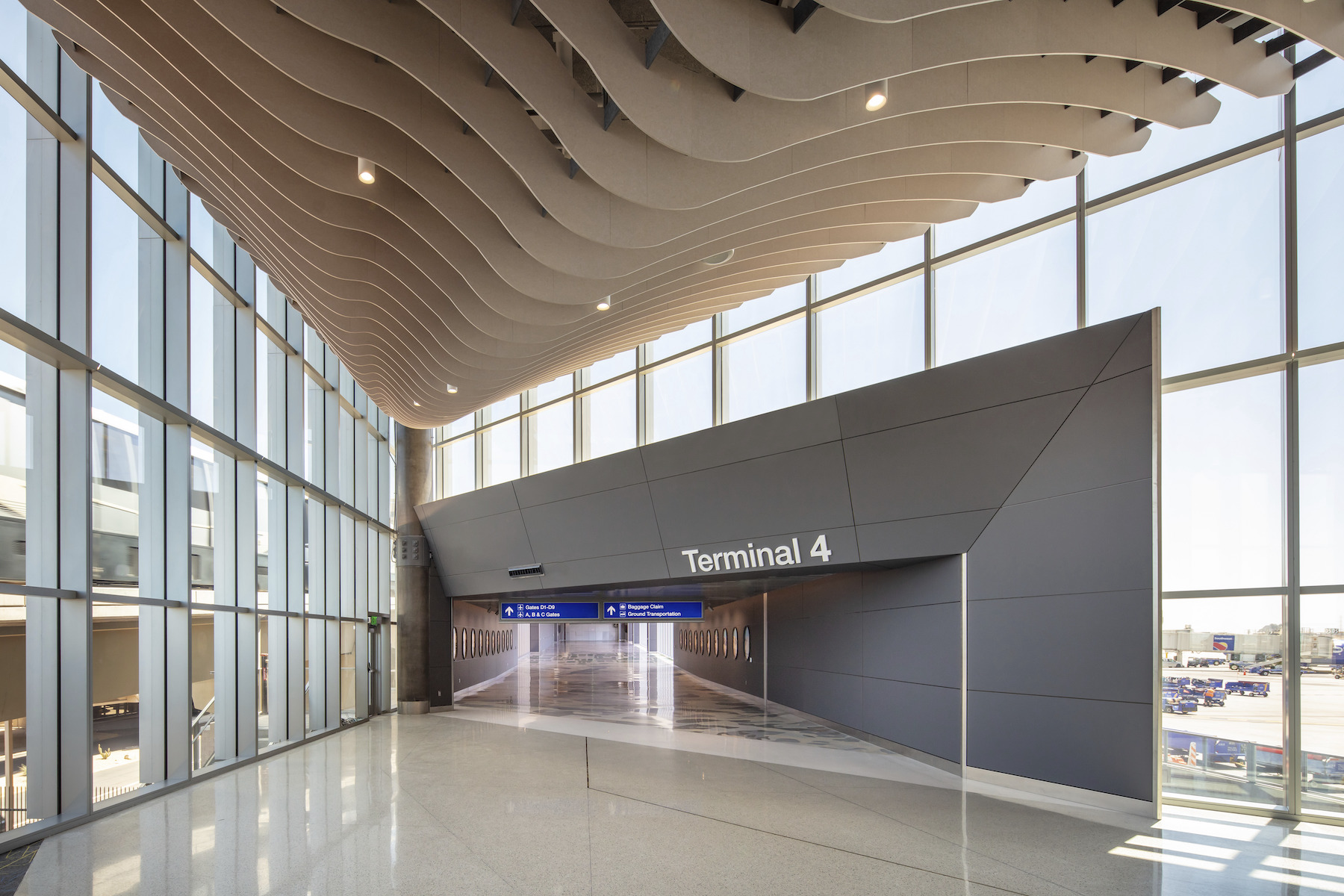
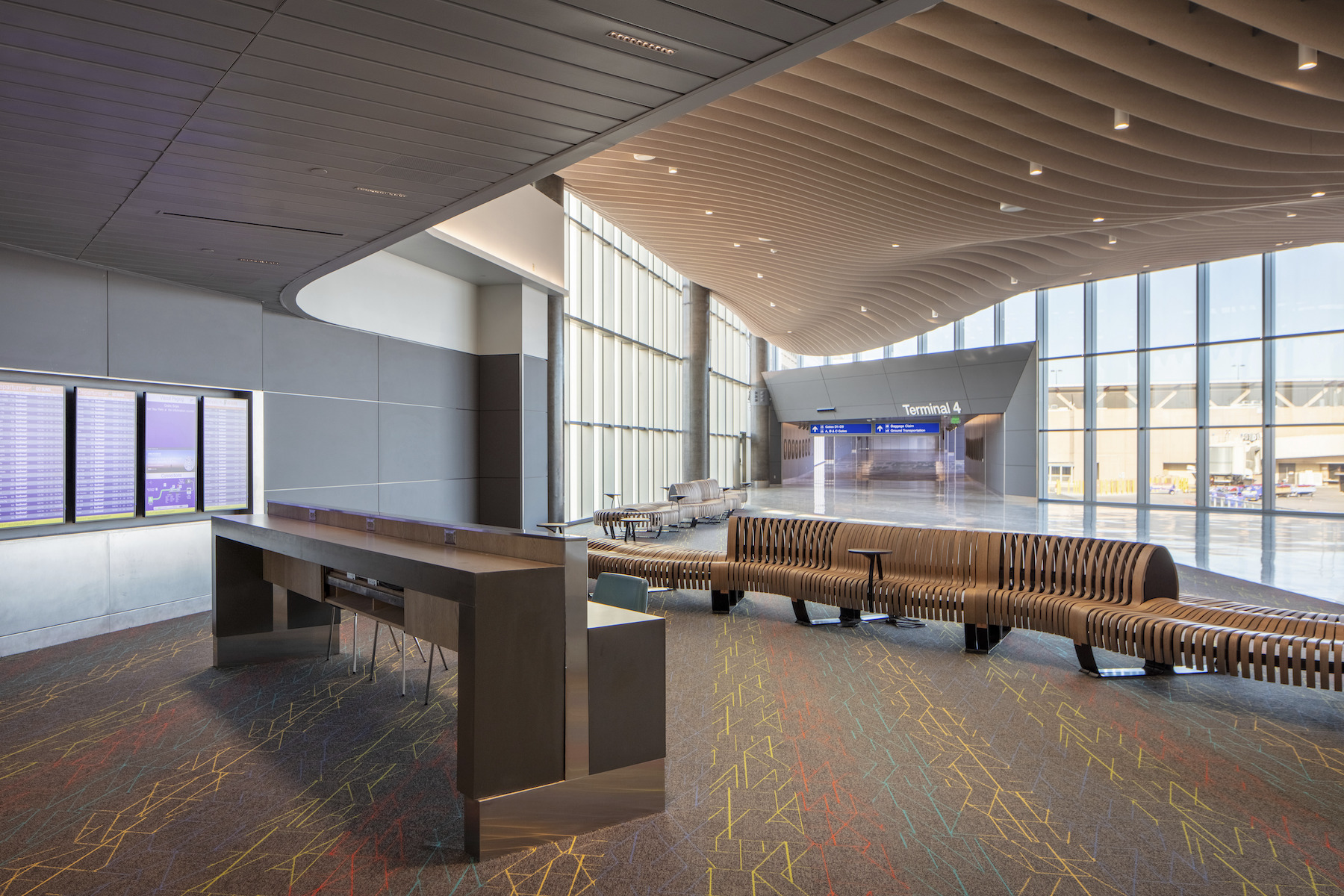
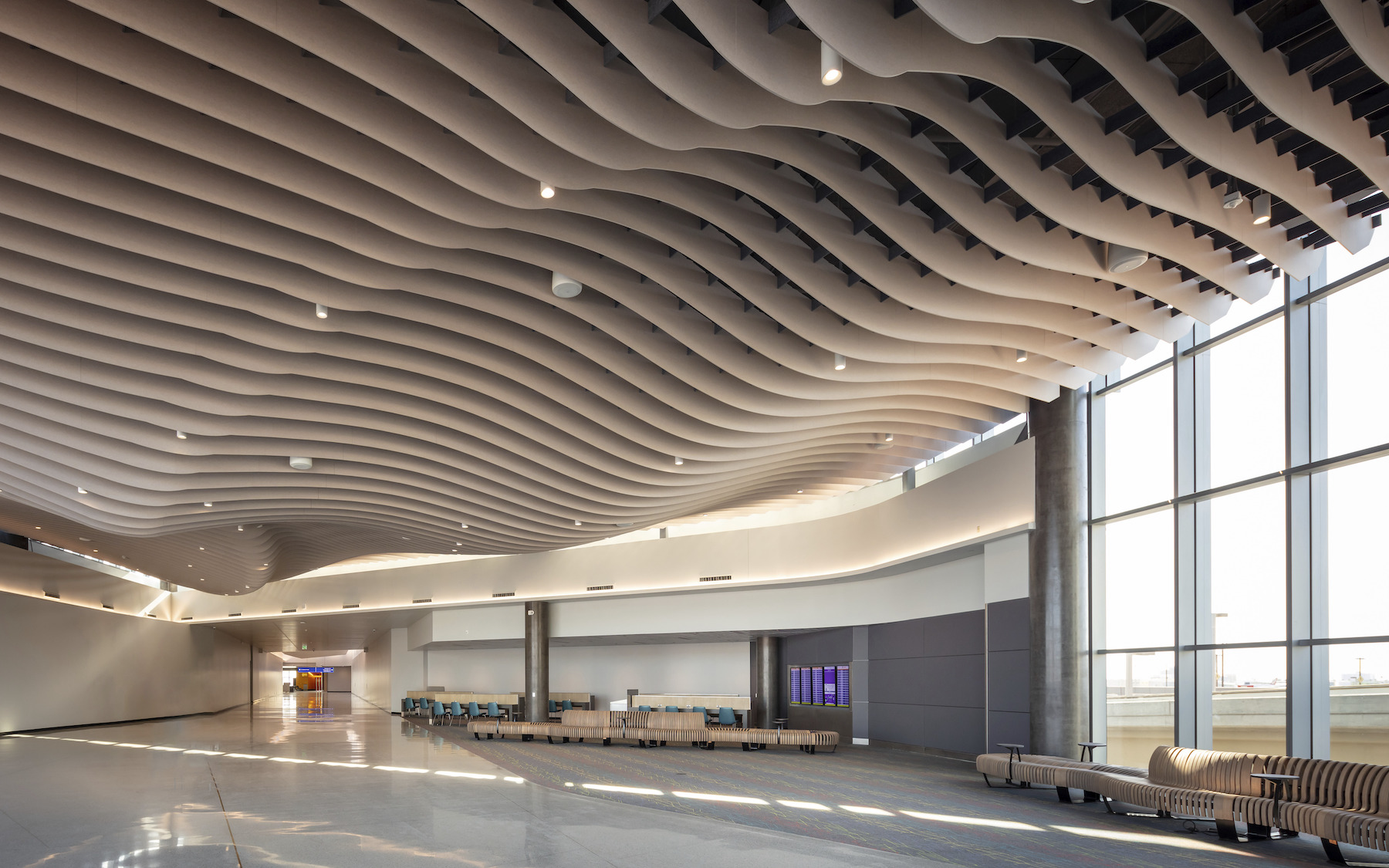
Related Stories
| Jul 2, 2014
Emerging trends in commercial flooring
Rectangular tiles, digital graphic applications, the resurgence of terrazzo, and product transparency headline today’s commercial flooring trends.
| Jun 30, 2014
Arup's vision of the future of rail: driverless trains, maintenance drones, and automatic freight delivery
In its Future of Rail 2050 report, Arup reveals a vision of the future of rail travel in light of trends such as urban population growth, climate change, and emerging technologies.
| Jun 18, 2014
Arup uses 3D printing to fabricate one-of-a-kind structural steel components
The firm's research shows that 3D printing has the potential to reduce costs, cut waste, and slash the carbon footprint of the construction sector.
| Jun 12, 2014
Austrian university develops 'inflatable' concrete dome method
Constructing a concrete dome is a costly process, but this may change soon. A team from the Vienna University of Technology has developed a method that allows concrete domes to form with the use of air and steel cables instead of expensive, timber supporting structures.
| Jun 2, 2014
Parking structures group launches LEED-type program for parking garages
The Green Parking Council, an affiliate of the International Parking Institute, has launched the Green Garage Certification program, the parking industry equivalent of LEED certification.
| May 29, 2014
7 cost-effective ways to make U.S. infrastructure more resilient
Moving critical elements to higher ground and designing for longer lifespans are just some of the ways cities and governments can make infrastructure more resilient to natural disasters and climate change, writes Richard Cavallaro, President of Skanska USA Civil.
| May 23, 2014
Top interior design trends: Gensler, HOK, FXFOWLE, Mancini Duffy weigh in
Tech-friendly furniture, “live walls,” sit-stand desks, and circadian lighting are among the emerging trends identified by leading interior designers.
| May 20, 2014
Kinetic Architecture: New book explores innovations in active façades
The book, co-authored by Arup's Russell Fortmeyer, illustrates the various ways architects, consultants, and engineers approach energy and comfort by manipulating air, water, and light through the layers of passive and active building envelope systems.
| May 19, 2014
What can architects learn from nature’s 3.8 billion years of experience?
In a new report, HOK and Biomimicry 3.8 partnered to study how lessons from the temperate broadleaf forest biome, which houses many of the world’s largest population centers, can inform the design of the built environment.
| May 13, 2014
19 industry groups team to promote resilient planning and building materials
The industry associations, with more than 700,000 members generating almost $1 trillion in GDP, have issued a joint statement on resilience, pushing design and building solutions for disaster mitigation.


